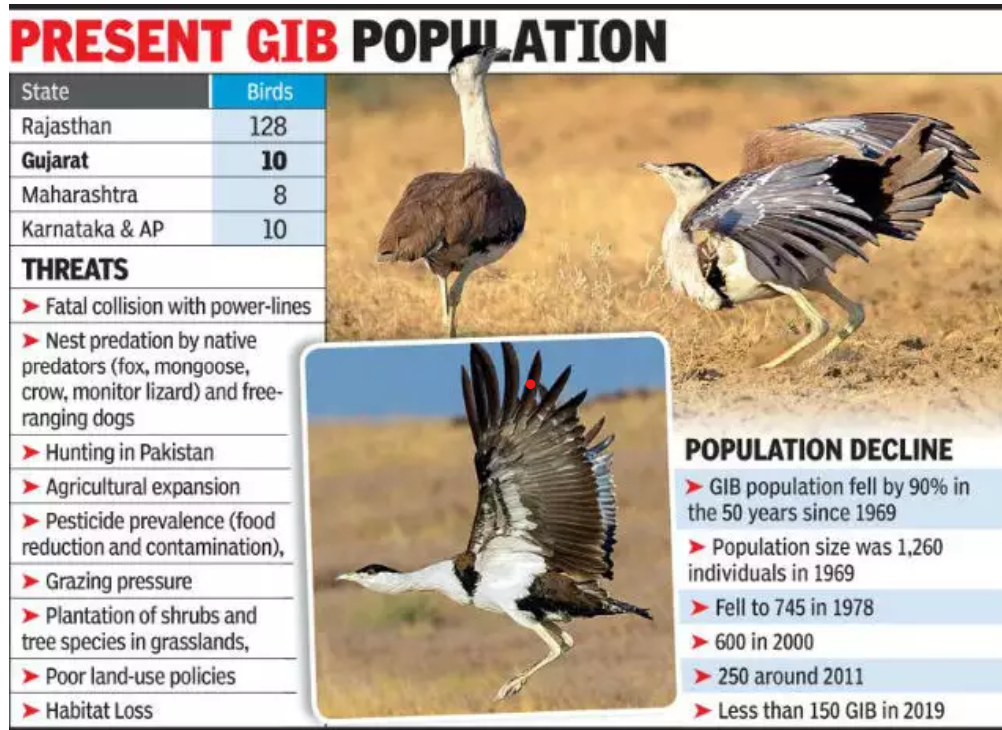Great Indian Bustard (GIB)

- 25 Oct 2024
A critically endangered Great Indian Bustard (GIB) chick was successfully born through artificial insemination (AI) at a breeding center in Jaisalmer, Rajasthan, marking a crucial step in efforts to save the species.
Endangered Status:
- The Great Indian Bustard is classified as critically endangered with fewer than 150 individuals left in the wild in India.
- About 90% of these birds are found in the desert areas of Rajasthan, with smaller populations in Gujarat, Maharashtra, Andhra Pradesh, and Karnataka.
Main Threats to the Species:
- Habitat Loss: The primary threat is the loss of habitat, which is often perceived as wasteland and is diverted for infrastructure projects like roads and development.
- Slow Reproductive Rate: The bustard’s low reproductive rate exacerbates its risk of extinction.
Conservation Efforts: Bustard Recovery Program
- In 2016, the Union Ministry of Environment, Forests and Climate Change launched the Bustard Recovery Program to focus on captive breeding and creating a sustainable environment for the reintroduction of GIBs into the wild.
- A dedicated GIB breeding center was set up at the Desert National Park in Jaisalmer, Rajasthan, as part of this initiative.
- Protection Status of GIB:
- IUCN: Critically Endangered
- CITES: Appendix 1
- Convention on Migratory Species (CMS): Appendix I
- Wildlife (Protection) Act, 1972: Schedule I
- It is also the state bird of Rajasthan, emphasizing its importance in the region’s biodiversity.
